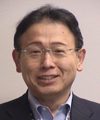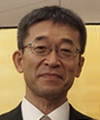Keynote Speaker
Toshihiko Nishigaki
 Vice President and General Manager,
Vice President and General Manager,
IT Strategy Division (Business Innovation), Technology Strategy Division,
Vice President, Corporate Project Dept., Technology Strategy Division,
Tokyo Electron
Chairman & President, TEL FSI
Biography
Toshi Nishigaki is currently Senior Vice President of Development and Production Division in Tokyo Electron Ltd, in charge of Business Innovation and Corporate Projects Division.
Previously he was General Manager of Surface Preparation System Business Unit and Clean Track Business Unit in Tokyo Electron.
He majored Electronics in Osaka University and worked on Quantum effect of electron in one dimensional channel.
Presentation Title
Advanced equipment and process control technology enabling sustainable scaling of semiconductor devices
Abstract
Semiconductors have been scaling for over 50 years since Moore's law was published. With the latest devices, to scale down by one generation, feature sizes scale by less than 20 atoms, and literally atomic-level precision is demanded for the critical fabrication processes of these devices.
At the same time, low yield and high productivity is essential for all unit processes as it leads to lower and affordable fabrication cost.
Productivity is defined mainly by semiconductor fabrication tool's throughput and tool availability.
While throughput depends on process performance, availability is largely decided by scheduled downtime such as quality control (QC) and preventative maintenance (PM), and unscheduled downtime where the tool is down due to unexpected trouble.
Unscheduled maintenance can occur when a tool is down, when a process becomes unstable, or when particles abruptly appear on wafers. As unscheduled maintenance can disturb production plans greatly, eliminating it using technologies to inspect and have control over minute particles is crucial to increase availability and yield with the latest semiconductors.
In this presentation, technologies to detect and control extremely small particles will be introduced.
Also, modeling techniques applying machine learning to decrease unscheduled maintenance will be reported.
Tutorial Speaker
Makoto Imamura
 School of Information and Telecommunication Engineering, Tokai University, Professor
School of Information and Telecommunication Engineering, Tokai University, Professor
Biography
He received B.Eng. and M.Eng. degrees in Applied Mathematics and Physics, Kyoto University, Japan in 1984 and 1986 respectively. And then he received a Ph.D. degree in Information Science and Technology, Osaka University, Japan in 2008. He is a professor of the school of Information and Telecommunication Engineering at Tokai University. He had worked for Mitsubishi Electric Corporation from 1986 until 2015. His research interests include data mining in system health management and combined model-based/data-driven approach to failure prognosis as well as condition monitoring of equipment in power plants, industrial facilities, and buildings.
Presentation Title
Data driven approach for Prognostics and Health Management
Abstract
In industrial domains, data-driven approach for predictive maintenance has attracted much attention as the Internet of Things (IoT), Industrial Internet and Industrie 4.0 have been emerging and growing. However, a simple application of data science in marketing domain to industry domain does not work enough because equipment is a physical system in nature. Therefore, this tutorial describes "Prognostics and Health Management (PHM)" that is a comprehensive approach to predictive maintenance with data-processing, physics and economics. It also describes a combining approach with a data-driven method and physics-based method and data analytical algorithm specific to predictive maintenance for equipment.
Ken Nishina
 Professor of Nagoya Institute of Technology Department of Industrial Engineering and Management
Professor of Nagoya Institute of Technology Department of Industrial Engineering and Management
Biography
Ken Nishina is a professor at Nagoya Institute of Technology. He received B.Eng. and M. Eng. from Nagoya Institute of Technology, in 1975 and 1977, and Ph. D from Tokyo Institute of Technology in 1990. His arears of research are Quality Control and Applied statistics.
Presentation Title
Active monitoring in SPC of Semiconductor Manufacturing Processes
Abstract
The environment in the data acquisition in the process of manufacture remarkably changed.
It may be difficult to implement process control by the conventional and passive method such that only the time series data of process output is monitored.
The reason is that the time series data may not have the function as the mirror of the process anymore as a result that the variability of the time series data is controlled by the APC.
In this lecture, how SPC should be implemented in the above situation is addressed.
APC changes a process parameter intentionally and as the result the output changes.
Considering the signal of the APC as an input, the relationship between the input and the output can be monitored.
The deterioration of the parts is caused by all means.
Considering the deterioration as an input, the relationship between the input and the output can be monitored, also.
Can it not be considered that conventional SPC is passive?
On the other hand, monitoring the relationship between the input and the output can be active.
In this lecture, case studies in the semiconductor manufacturing process are addressed.
T2 - Q control charts are applicable in the case of the parts deterioration.










